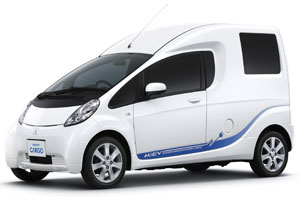
Australian motorists will be slow to take up electric vehicles, but by 2025 a third of all passenger-car sales Down Under will be electric, Sydney-based consultancy firm Energeia says in a new report.
Despite major makers’ plans to introduce five models over the next two years, sales of EVs will be slow over the next decade due to a lack of choice, immature battery and charging technology and nascent government and electricity industry support, the firm says in its report entitled “Electric Vehicles – Driving a Revolution.”
“Consumers will save money, policymakers can reduce urban pollution and transportation emissions (with incentives), suppliers can increase electricity sales and networks can lower peak demand,” Energeia Managing Director Ezra Beeman says in a statement.
“The question is, what is being done to accelerate their arrival, and the answer is, not much.”
Energeia sees international EV pricing and technology developments as ultimately driving a major acceleration in Australian sales from 2020.
“Australia has been slow to establish the kind of supportive policy and regulatory framework needed to keep pace with leading overseas jurisdictions,” the report says.
“Unlike the U.S., China, Germany, France or Spain, Australia lacks a national target for electric-vehicle adoption, or the programs required to achieve them.”
Beeman says the absence of consumer subsidies will mean Australian purchase premiums will be nearly double those in the U.S., U.K. and Japan, and almost four times higher than leading markets such as California.

“Other key barriers facing Australia’s electric-vehicle market include a lack of charging infrastructure, charging network roaming arrangements, industry standards for fast charging and preferential tariffs to minimize the impact of electric vehicles on the grid,” he says.
The report also notes a lack of incentives for EV owners to use zero-carbon, renewable energy.
Eventually, their superior torque curve, increasingly longer driving range, lower total cost of ownership and environmental benefits mean EVs will begin to displace internal-combustion cars from about 2020, as technology matures and infrastructure is put in place, Beeman says.
By 2030, Energeia’s modeling shows there will be 3.4 million EVs on Australian roads – about 25% of all cars.
This new market segment will require 6 terawatt hours of electricity generation annually – the equivalent of a new 800 megawatt gas-fired, combined cycle turbine power station.
“Unless measures are taken to manage EV demand, Energeia’s modeling suggests the electricity industry’s evening peak could increase by 1.5% per annum over the next 20 years, adding hundreds of millions of dollars in additional network and generation costs,” the report says.
Beeman says Australians will have to wait awhile before EVs present a cost-effective alternative to the gasoline engine. “Nevertheless, the electric-car revolution is coming to Australia,” he adds.
The report says customers have yet to be persuaded in big numbers of the benefits of EVs, particularly given their limited range, higher upfront costs and unproven resale value, but this has not stopped major manufacturers from announcing plans for 20 EV models by 2014.
“Customer demand is outstripping supply, and Mitsubishi and Nissan have both announced 50%-100% increases in their near-term production capacity,” it says.
Even so, Energeia’s analysis suggests it may take several years before supply catches up to demand.
The report says the nature of technology diffusion, fleet-purchasing patterns and the demographics of early adopters suggest EVs will cluster in niche, largely affluent communities, with implications for electricity network augmentation and public charging infrastructure deployment.
“Although the EV industry is largely based on the existing vehicle manufacturing and electricity value chains, significant development is required to integrate the new fuel, propulsion system and refueling infrastructure into manufacturing supply chains, network infrastructure and energy markets,” it says.
Energeia says it has identified important gaps. One of these is a lack of public charging networks needed to provide a convenient, if relatively expensive, option to vehicle drivers.
Another is EV servicing. The report says EVs are relatively simple, but owners will be locked into dealer service arrangements until independent operators enter the market.




